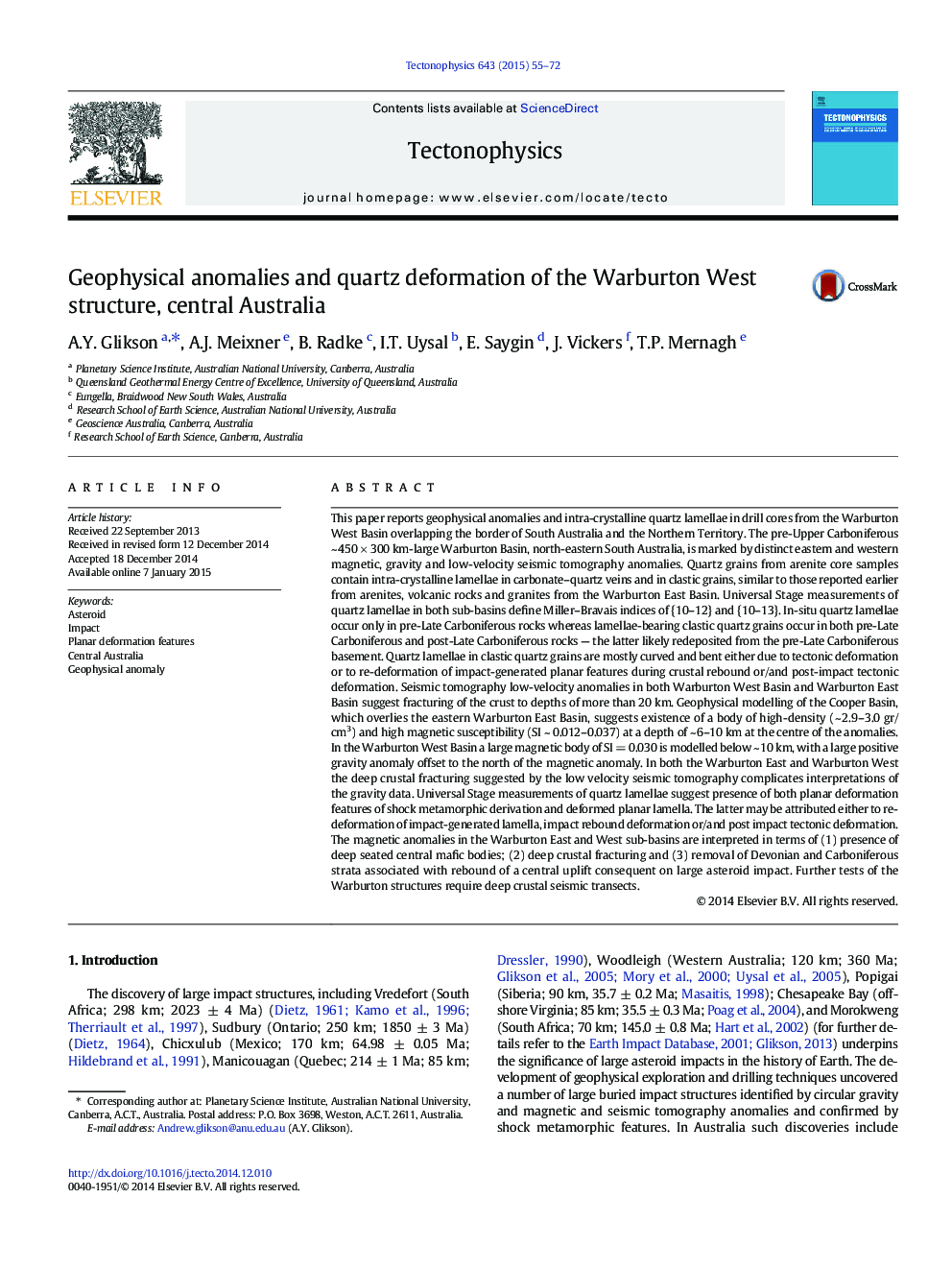| کد مقاله | کد نشریه | سال انتشار | مقاله انگلیسی | نسخه تمام متن |
|---|---|---|---|---|
| 4691679 | 1636749 | 2015 | 18 صفحه PDF | دانلود رایگان |
• The paper reports large buried possible impact structures in central Australia.
• The structures are marked by deep-seated magnetic and seismic tomography anomalies.
• U-stage and TEM studies of quartz define Miller–Bravais and deformed lamella.
• Missing Devonian to upper Carboniferous strata suggest strong uplift.
This paper reports geophysical anomalies and intra-crystalline quartz lamellae in drill cores from the Warburton West Basin overlapping the border of South Australia and the Northern Territory. The pre-Upper Carboniferous ~ 450 × 300 km-large Warburton Basin, north-eastern South Australia, is marked by distinct eastern and western magnetic, gravity and low-velocity seismic tomography anomalies. Quartz grains from arenite core samples contain intra-crystalline lamellae in carbonate–quartz veins and in clastic grains, similar to those reported earlier from arenites, volcanic rocks and granites from the Warburton East Basin. Universal Stage measurements of quartz lamellae in both sub-basins define Miller–Bravais indices of {10–12} and {10–13}. In-situ quartz lamellae occur only in pre-Late Carboniferous rocks whereas lamellae-bearing clastic quartz grains occur in both pre-Late Carboniferous and post-Late Carboniferous rocks — the latter likely redeposited from the pre-Late Carboniferous basement. Quartz lamellae in clastic quartz grains are mostly curved and bent either due to tectonic deformation or to re-deformation of impact-generated planar features during crustal rebound or/and post-impact tectonic deformation. Seismic tomography low-velocity anomalies in both Warburton West Basin and Warburton East Basin suggest fracturing of the crust to depths of more than 20 km. Geophysical modelling of the Cooper Basin, which overlies the eastern Warburton East Basin, suggests existence of a body of high-density (~ 2.9–3.0 gr/cm3) and high magnetic susceptibility (SI ~ 0.012–0.037) at a depth of ~ 6–10 km at the centre of the anomalies. In the Warburton West Basin a large magnetic body of SI = 0.030 is modelled below ~ 10 km, with a large positive gravity anomaly offset to the north of the magnetic anomaly. In both the Warburton East and Warburton West the deep crustal fracturing suggested by the low velocity seismic tomography complicates interpretations of the gravity data. Universal Stage measurements of quartz lamellae suggest presence of both planar deformation features of shock metamorphic derivation and deformed planar lamella. The latter may be attributed either to re-deformation of impact-generated lamella, impact rebound deformation or/and post impact tectonic deformation. The magnetic anomalies in the Warburton East and West sub-basins are interpreted in terms of (1) presence of deep seated central mafic bodies; (2) deep crustal fracturing and (3) removal of Devonian and Carboniferous strata associated with rebound of a central uplift consequent on large asteroid impact. Further tests of the Warburton structures require deep crustal seismic transects.
Journal: Tectonophysics - Volume 643, 7 March 2015, Pages 55–72
